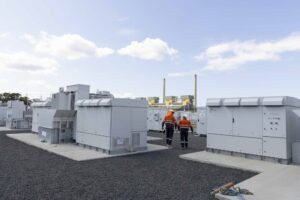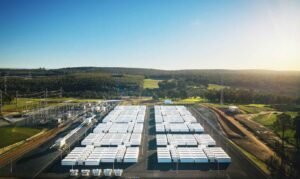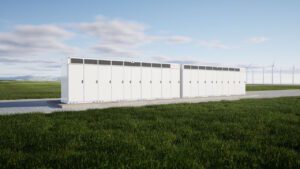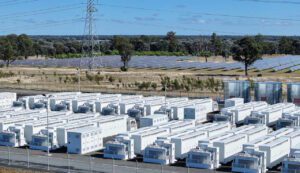It didn’t take less than 100 days to complete – it was closer to 100 weeks – but the newly opened Lakeland solar and storage facility in far north Queensland may be a world leader in battery storage, even if it doesn’t carry the cachet of the twitter-wise Tesla big battery.
The 1.4MW/5.3MWh lithium-ion battery storage facility – built alongside a 10.8MW solar farm some 240kms north of Cairns, at the very edge of the grid – may be tiny in comparison to Tesla’s 100MW/129MWh installation next to the Hornsdale wind farm, but it may be no less significant.
Tesla’s installation has impressed all observers with its versatility, speed and reliability, and its ability to not just stabilise the grid when a big coal generator trips, which is often, but also inject power at crucial times – not to mention puncturing the gas cartel’s bidding orgies that bedevil the small South Australia grid.
The Lakeland battery storage installation has also been installed with multiple services in mind, most particularly to deliver some local resilience for an area whose nearest large scale generation before this installation was 1,200kms away.
As many fringe of grid locations have found, that sort of distance has invited also sorts of reliability issues, including fires, storms, salt build up, constraints and other problems. Local industry often had to deal with less capacity, or no power at all, because of it.
According to the battery storage develop, the German-based Autarsys, it will be the first grid-connected battery storage installation in the world to showcase five different market settings.
To give some idea of the unique
These are the five functionalities that this battery storage system will be able to demonstrate simultaneously:
- PV support mode: To improve a solar system’s reliability, battery systems can close gaps between the generation and demand of power. Here the system uses features like PV smoothing and ramping or peak shaving to stabilize the renewable system.
- Grid support mode: When connected to the grid, the ESS serves as an intermediary between the grid and PV systems. In this mode, the battery inverters secure a more stable grid by managing the input and output of active and reactive power, and ultimately reduce the likelihood of brownouts.
- Island mode: In the event of power disruptions within the national grid, the local system can operate independently powering the local community of 3,000 households.
- Market mode: When connected to the national grid, renewable systems can be profitable ventures. This mode shows how the system can participate in energy arbitrage trading.
- Combined mode: Perhaps the most relevant to real-world applications, this is where the project tests different modal combinations to optimize the RE system’s economic viability.
“This is the first time that five functionalities of a grid-connected renewable energy system have been tested – the implications are far reaching for the future of energy storage systems,” said Erich Bosch, co-founder and CTO of Autarsys.
The company adds that this will show how battery storage can be scaled up and applied elsewhere in global markets. The battery storage system and software is located in one 20-foot and two 40-foot battery containers.
Austarsys has focused mostly in the developing world, with a focus on electrifying communities for the first time, integrating on and off-grid power systems, replacing aging carbon and fossil fuel systems with renewables, and introducing intelligent software to optimize energy use.









